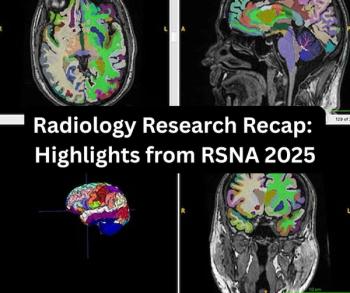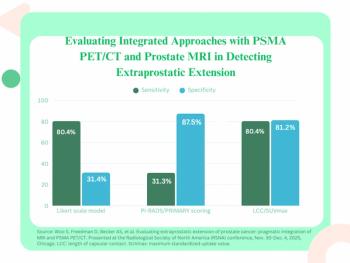Emerging research suggests that three body composition parameters derived from chest computed tomography (CT) scans may offer prognostic insights into survival rates for patients with resectable non-small cell lung cancer (NSCLC).
For the retrospective multicenter study, recently published in Insights into Imaging, researchers reviewed data from preoperative chest CT scans for 2,712 patients (mean age of 61.53) with resectable NSCLC. The study authors noted that 635 patients6 in the cohort died and 465 patients had NSCLC recurrence and/or distant metastasis.
The researchers found that high intermuscular adipose index (IMAI) was associated with a 49 percent higher risk of lower overall survival (OS) in patients with resectable NSCLC. A high skeletal muscle index (SMI) was associated with a 14 percent reduced risk of lower OS in this patient population, according to the study authors.
“A reduction in muscle mass can weaken the immune system, making it more challenging for the body to fight cancer and recover from treatment. NSCLC patients with greater muscle mass typically tolerate surgical treatments better, experiencing fewer and less severe side effects. Muscle mass also helps mitigate the catabolic effects of treatments, promoting faster recovery and reducing complications,” wrote lead study author Yilong Huang, M.D., who is affiliated with the Department of Radiology and the Guangdong Cardiovascular Institute at the Guangdong Provincial People’s Hospital in Guangdong, China, and colleagues.
In comparison to a clinical model, the researchers found that a combined model that incorporated clinical and CT body composition parameters had a nearly eight percent higher area under the curve (AUC) at one year (70.7 percent vs. 62.9) and over a 10 percent higher AUC at three years (73.3 percent vs. 62.4 percent) for predicting OS in the patient cohort.
Three Key Takeaways
1. Body composition as a prognostic tool. Chest CT-derived parameters, including skeletal muscle index (SMI) and intermuscular adipose index (IMAI), may provide valuable prognostic insights for patients with resectable NSCLC. High IMAI is linked to a 49 percent higher risk of lower overall survival (OS), whereas high SMI is associated with a 14 percent reduced risk of lower OS.
2. Enhanced predictive accuracy with CT models. A combined model incorporating both clinical factors and CT body composition parameters demonstrated superior prognostic accuracy, improving OS prediction by nearly 8 percent at one year and over 10 percent at three years compared to a clinical-only model.
3. Clinical implications of muscle mass. Greater muscle mass supports better surgical tolerance, fewer side effects, and faster recovery, emphasizing the importance of assessing muscle quality in NSCLC patients to guide clinical decision-making and interventions.
“By integrating multiparametric body composition analysis with traditional risk factors, high-risk patients with poor prognosis can be identified early, enabling timely intervention. Although clinical information continues to be significant, our study emphasizes the significance of muscle quality measures and energy storage in clinical decision-making for patients with NSCLC,” emphasized Huang and colleagues.
The researchers also pointed out that the CT-derived body composition parameters did not elevate the prognostic capability beyond that of the clinical model for predicting one- and three-year outcomes for disease-free survival (DFS).
(Editor’s note: For related content, see “Computed Tomography Study Assesses Model for Predicting Recurrence of Non-Small Cell Lung Cancer,” “What Emerging CT Research Reveals About Obesity and Post-Op Survival for Non-Small Cell Lung Cancer” and “CT Study Reveals Key Indicators for Angiolymphatic Invasion in Non-Small Cell Lung Cancer.”)
In regard to study limitations, the authors acknowledged the time-consuming and labor-intensive process for manual segmentation of high-resolution CT images. They also noted missing BMI data in over 12 percent of the cohort at one facility. The researchers conceded that factors, such as muscle strength, nutritional status and respiratory function, that were not assessed in the study, could have an impact upon outcomes in this patient population.





























